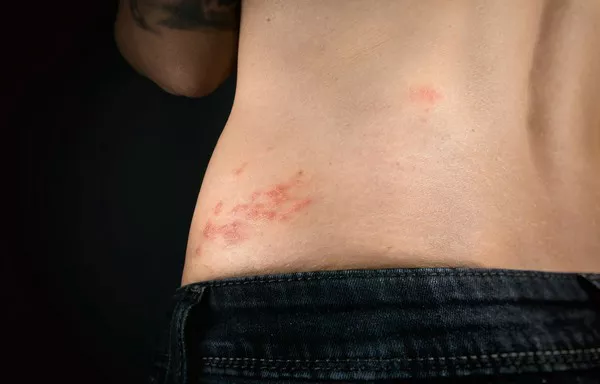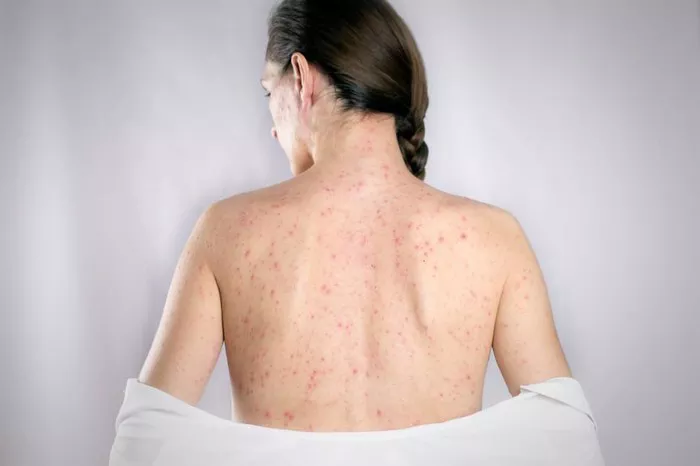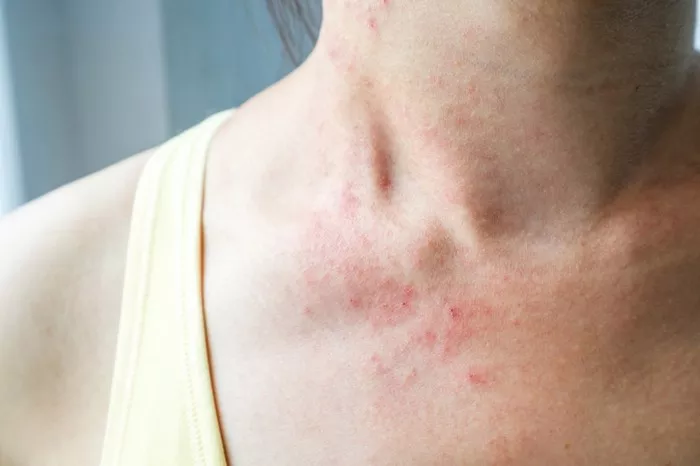Shingles is a viral infection caused by the varicella-zoster virus, which also causes chickenpox. After a person recovers from chickenpox, the virus can remain dormant in the body. Later in life, the virus can reactivate and cause shingles, a painful skin rash with blisters. Shingles can appear anywhere on the body, but when it affects the neck, it can cause discomfort, pain, and irritation. If you’re dealing with shingles on your neck, here’s a comprehensive guide to help you manage the symptoms and take care of your skin during the healing process.
Understanding Shingles and Its Symptoms
Shingles usually starts with pain, itching, or a tingling sensation in a specific area of the skin. This is followed by the appearance of a rash, often in a strip or band-like pattern, which usually affects one side of the body. When shingles occur on the neck, you may experience the following symptoms:
Pain: The pain can vary from mild to severe. It is often described as burning, stabbing, or aching. The pain may occur even before the rash appears.
Rash: The rash typically develops as red patches, and then blisters filled with fluid form. The rash is often localized along the neck or upper back, and may wrap around one side of the neck.
Itching: The area where the rash develops can be itchy, which can be uncomfortable, especially if the skin becomes irritated.
Tenderness: The skin around the rash may feel tender or sore to the touch.
Fever and Fatigue: Some people with shingles may experience a mild fever, chills, or a feeling of fatigue as their body fights the infection.
How to Manage Shingles on Your Neck
If you’re dealing with shingles on your neck, there are several things you can do to manage the symptoms and promote healing. While the infection typically heals on its own within 2 to 4 weeks, early intervention and proper care can help reduce discomfort and prevent complications.
1. Consult a Doctor as Soon as Possible
If you suspect that you have shingles, it’s important to consult a doctor right away. Early treatment with antiviral medications can reduce the severity of the infection and the duration of symptoms. Antiviral medications such as acyclovir, valacyclovir, and famciclovir are commonly prescribed to shorten the course of shingles. The sooner you begin treatment, the better the outcome.
2. Take Antiviral Medication
Antiviral medications work by slowing down the replication of the varicella-zoster virus, which can help reduce the intensity of the rash and pain. These medications are most effective when taken within 72 hours of the appearance of the rash. Make sure to follow your doctor’s instructions for taking the medication.
3. Use Pain Relief Strategies
Managing pain is one of the most important aspects of dealing with shingles on the neck. There are several strategies that can help relieve the discomfort:
Over-the-counter pain relievers: Medications like ibuprofen (Advil), acetaminophen (Tylenol), or aspirin can help reduce pain and inflammation. Make sure to take these medications as directed and avoid overuse.
Topical creams: Calamine lotion or lidocaine patches may be applied to the affected area to numb the skin and relieve pain.
Cool compresses: Applying a cool, damp cloth to the rash can help soothe the skin and reduce irritation. Be sure to avoid using hot compresses, as heat may make the pain worse.
Prescription pain relievers: In some cases, your doctor may prescribe stronger pain medications, such as opioids or nerve pain medications like gabapentin or pregabalin, to help manage more severe pain.
4. Keep the Area Clean and Dry
It’s essential to keep the rash area clean and dry to avoid infection and further irritation. Here are a few tips to care for the rash on your neck:
Gentle cleansing: Wash the affected area with mild soap and water. Avoid scrubbing the rash, as it can make the skin more sensitive. Pat the skin dry with a clean towel, being gentle to avoid irritating the rash.
Avoid tight clothing: Wearing loose, comfortable clothing can prevent the fabric from rubbing against the rash and causing additional irritation. Tight collars or necklaces can also irritate the affected area, so it’s best to avoid wearing them until your rash heals.
Avoid scratching: Although shingles can be itchy, it’s important not to scratch the rash, as this can cause secondary bacterial infections and lead to scarring.
5. Moisturize the Skin
Applying a moisturizer to the skin can help soothe dryness and reduce irritation. Look for a fragrance-free, hypoallergenic moisturizer to avoid any allergic reactions. Aloe vera gel is another popular option known for its calming and healing properties. Apply the moisturizer gently after cleansing your skin to keep it hydrated.
6. Consider Using Cool or Cold Baths
Taking a cool or lukewarm bath can help ease the itching and discomfort associated with shingles. You may also add colloidal oatmeal to the bath, as it has anti-inflammatory properties that can soothe the skin. Soak for 15 to 20 minutes and then gently pat your skin dry with a towel. Avoid hot baths or showers, as heat can worsen the pain and irritation.
7. Manage Stress and Boost Your Immune System
Stress can weaken the immune system, making it harder for your body to fight off infections. Managing stress during your shingles outbreak can help your body heal more effectively. Consider practicing relaxation techniques, such as deep breathing, meditation, or yoga, to reduce stress levels.
A strong immune system is crucial in fighting shingles, so it’s important to support your body’s defense system. Eating a balanced diet rich in vitamins, minerals, and antioxidants can help boost immunity. Foods high in vitamin C (like citrus fruits) and vitamin E (found in nuts and seeds) can be particularly beneficial.
8. Avoid Spreading the Infection
Shingles is contagious, particularly when the blisters are open and oozing. The virus can spread to anyone who hasn’t had chickenpox or received the chickenpox vaccine. To avoid spreading shingles to others, follow these precautions:
Cover the rash: Keep the rash covered with loose clothing or bandages to prevent direct contact with others.
Practice good hygiene: Wash your hands frequently, especially after touching the rash or applying medication.
Avoid contact with vulnerable individuals: Shingles can be dangerous for pregnant women, newborns, and individuals with weakened immune systems. Avoid close contact with these groups until the rash has scabbed over.
9. Stay Hydrated
Keeping your body hydrated is essential for overall health and can support your body’s healing process. Drink plenty of water throughout the day. Dehydration can make symptoms worse and slow down recovery.
10. Follow Up with Your Doctor
Even after starting antiviral treatment, it’s important to follow up with your doctor to monitor the progress of your recovery. If you experience complications, such as a severe outbreak, vision problems, or prolonged pain, your doctor may recommend additional treatments or therapies.
11. Know the Risk of Postherpetic Neuralgia
One of the most common complications of shingles is postherpetic neuralgia (PHN), a condition where the pain persists long after the rash has healed. PHN can be especially common when shingles affects areas like the neck, where the pain can be intense and long-lasting. To reduce the risk of PHN, early treatment with antiviral medication is key. Your doctor may also prescribe medications to manage nerve pain if you develop PHN.
Conclusion
Shingles on the neck can be a painful and uncomfortable condition, but with the right treatment and care, the symptoms can be managed effectively. Early antiviral medication, pain relief strategies, proper skin care, and lifestyle adjustments are essential steps in reducing the severity and duration of the infection. If you’re dealing with shingles, be sure to consult your doctor and follow their advice to ensure a smooth recovery.
Related topics:


























